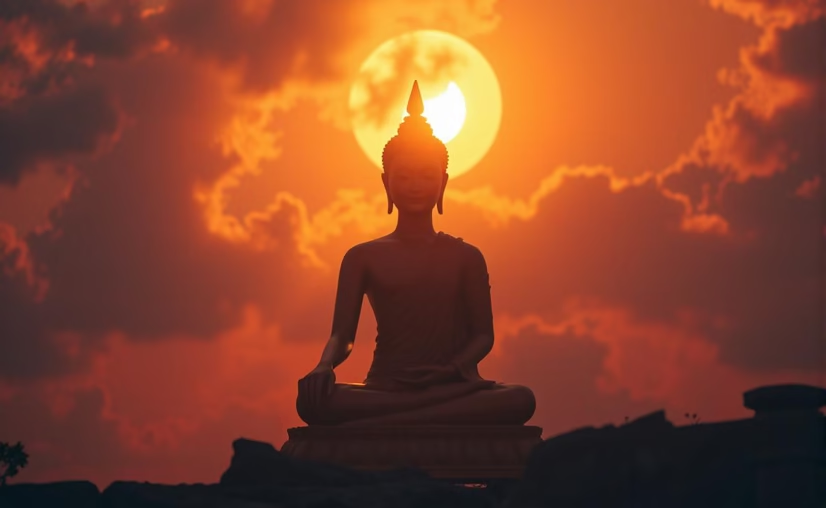Nirvana: The Ultimate Goal of Buddhist Philosophy

Nirvana: The Ultimate Goal of Buddhist Philosophy
Featured Snippet Intro: Buddhist philosophy regards Nirvana as its highest achievement since it represents freedom from suffering through wisdom and compassion which terminates rebirth.
The 5th century BCE teachings of Gautama Buddha introduced Nirvana as the ultimate state of liberation which frees one from suffering and the cycle of rebirth known as samsara. The Pali Canon forms the foundation for this state which expresses deep wisdom and compassion while offering ultimate peace. My studies of Buddhist philosophy focus on Nirvana because its promise of freedom inspires ethical behavior and mindfulness among practitioners from ancient times to today.
What Is Nirvana?
Nirvana represents the end of samsara through the permanent cessation of craving and ignorance as well as suffering. In the Samyutta Nikaya Nirvana is defined as “the unconditioned” and exists beyond birth and death. According to Scholar Peter Harvey Nirvana represents a transcendent state beyond normal experience which one can attain through following the Eightfold Path. Enlightened beings live Nirvana while striving to reach it as their ultimate objective.
Key Characteristics of Nirvana
- Cessation of Suffering: Nirvana liberates the mind from the Three Poisons which include greed, hatred and delusion.
- Unconditioned: Exists beyond impermanent phenomena.
- Peace: A state of profound calm and clarity.
Nirvana in the Four Noble Truths
Nirvana stands at the heart of the third Noble Truth (nirodha) which holds that suffering can reach its conclusion. According to the Dhammacakkappavattana Sutta Nirvana results from eliminating craving via the Eightfold Path as established in the fourth truth. The Journal of Buddhist Studies published in 2021 showed how Nirvana serves as a practical target which directs both ethical behavior and meditative exercises.
Connection to the Truths
- Dukkha: Suffering is universal due to clinging.
- Samudaya: Craving causes suffering and rebirth.
- Nirodha: Nirvana ends suffering by extinguishing craving.
- Magga: The Eightfold Path leads to Nirvana.
Types of Nirvana
Buddhist scriptures define two categories of Nirvana which represent different levels of spiritual liberation. A 2020 study in Buddhist Studies Review shows that the Abhidhamma and subsequent commentaries detail distinctions of Nirvana which remain accessible both in life and after death.
Two Forms of Nirvana
- Nirvana with Remainder (Sa-upadisesa Nibbana): An arhat reaches this state of Nirvana while living but still retains physical existence and mental aggregates.
- Nirvana without Remainder (Anupadisesa Nibbana): Upon death one experiences total liberation without being reborn.
The Eightfold Path and Meditation Offer a Route to Nirvana
By practicing the Eightfold Path—right view, intention, speech, action, livelihood, effort, mindfulness, and concentration—individuals find a practical way to reach Nirvana. The practice of Vipassana and metta meditation develops understanding of impermanence, no-self and suffering and leads to the elimination of desire. The Satipatthana Sutta provides guidance for mindfulness practice and research published in the 2021 Mindfulness journal demonstrates meditation’s ability to develop mental clarity which supports the quest for Nirvana.
Practical Steps to Reach Nirvana
- Ethical Conduct: Purify your actions by adhering to the Five Precepts.
- Mental Discipline: Practice mindfulness to observe craving.
- Wisdom: Use meditation and study to gain understanding about reality.
Discover additional insights in our article about The Middle Path.
Why Nirvana Matters Today
The 520 million Buddhists around the world find hope in Nirvana’s liberation promise during times of modern stress and uncertainty (Pew Research Center, 2020). The 2021 Mindfulness study shows that mental health benefits from mindfulness practices which follow a path toward Nirvana. The idea promotes ethical living and compassion which helps solve societal issues such as conflict and materialism while sites like Kushinagar where Buddha achieved Nirvana stimulate contemplation according to research from 2022 Heritage Studies.
Ways to Engage with the Concept of Nirvana
- Meditate: Practice daily Vipassana meditation with guidance from the Satipatthana Sutta.
- Study Texts: Access to Insight provides the text of the Samyutta Nikaya for reading.
- Live Ethically: Apply the Eightfold Path in daily decisions.
- Visit Sites: Discover Kushinagar or become part of online sanghas for spiritual inspiration.
FAQ: Nirvana in Buddhist Philosophy
- What is Nirvana in Buddhist philosophy?
- Nirvana represents the complete freedom from suffering and rebirth which manifests as peace when one ends craving through wisdom and compassion.
- How does Nirvana relate to the Four Noble Truths?
- Nirvana exists as the third Noble Truth because it represents the cessation of suffering which is achieved through eliminating craving by following the Eightfold Path.
- What are the two types of Nirvana?
- A person who experiences Nirvana with remainder continues to live with some attachments until their death but achieves Nirvana without remainder when they reach complete liberation after dying.
- Why is Nirvana relevant in modern life?
- The practice of Nirvana leads to mindful existence and ethical conduct while promoting compassion which helps manage stress and develops peace amidst modern complexities.
- Where can I learn more about Nirvana?
- Visit Access to Insight or the Buddhist Digital Resource Center to find Nirvana writings.
Conclusion: The Pursuit of Ultimate Peace
In Buddhist philosophy Nirvana stands as the ultimate destination because it represents both wisdom and compassion which enable liberation from suffering and lead to profound peace. Its teachings function as a pathway for people to live mindfully and ethically in the modern world. Post your reflections on Nirvana in the comments section or subscribe to continue learning about Buddhist philosophy!